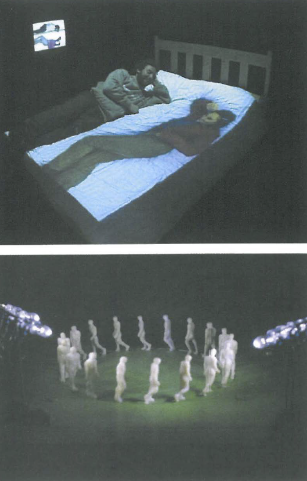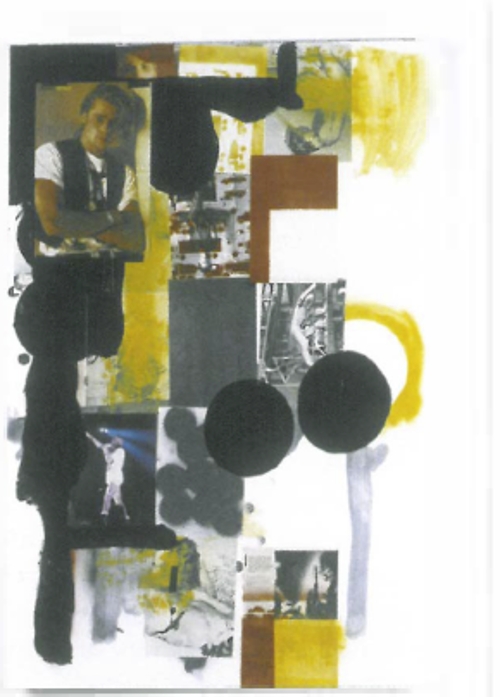
Perceptual Difference was a superbly installed exhibition that dealt with the way in which we perceive the world. Paul Sermon (UK) who specialises in chroma-keyed telematic artworks utilising video conferencing techniques, was given the most space with three large installations.
Two of them were telematic artworks in each of which two identical rooms are connected by cameras. You sit at a sofa [ILLUS] And watching yourself on the TV screen. In the other room someone else is sitting on a sofa and your images are shown together on the screen. The result is that you can inter-relate with the virtual body that sits next to you. In the private view kids had to be dragged away from the endless fun they were having with these installations. Personally I tired of the amusement quicker than the children did.
In Sermon's bathroom installation I stared into the framed mirror over the sink. My own reflection was missing. I was looking through a framed hole in the wall to an identical room built as a mirror image of the one I was in. At the far end of the room was a notice with a quote from Lacan's Mirror Stage, but he hadn't reversed it. In my room however the notice was in mirror writing. So actually I was standing in the mirror image, the reality of which was the other room. The neat elegance of this contradiction gave me great pleasure. I thought it ironic that Sermon's deepest work was devoid of technology.
Ecstasis by Metraform of Australia used dazzling technology to produce a 'multi user experiential installation' which explores the possibilities of interactive virtual abstract environments using four large screens. It was fun but I left it feeling that it was impressively inconsequential like a big boy's computer game.
This was not the case with Because we are small [ILLUS] And by Tim Lewis (UK), the smallest but for me the best work in the show. A ring of tiny human beings appear to walk round in a circle under a strobing light source in a wooden box. They were just fascinating. The human quality, so absent in some of the installations, was captivating. These little men trudged round and round trapped inside their box, like high security prisoners in an exercise yard. Their purposeful purposeless activity neatly asked existential questions about our own condition.
Biodifference at Lawrence Wilson is devoted to biotechnology and examines some of the issues and ethics that it raises. The first gallery that I entered contained a ring of large stones in the centre of the floor. [ILLUS] And It inscribed the territory of three fishbowls, each mounted on an elegant, robotically controlled trolley. This was Ken Renaldo's Augmented Fish Reality.
Inside each bowl was a Siamese Fighting fish. Their water was oxygenated by a Peace Lily, an inspired piece of symbolism. As you approach the bowls the fish react to you which is then translated by computers into the movement of the trolley. The fish didn't react to me at all perhaps sensing that I was an art critic. This was however one of the best pieces in the show. The ring of stones had a powerful physical presence, referring to other stone circles, including Stonehenge, in which art, science and religion had merged.
The strongest work in Bio-Difference for me was by Donna Franklin. It consisted of a white dress, which had been colonised by a fungal growth. This encrustation was in reds, oranges, pinks and dull greens, transforming the white purity of the cotton fibre into a living fabric of dazzling beauty. Clothing is part of our identity, used to signal gender, social position and allegiances. The invasion of something so closely connected with self by a beautiful but alien life form was wonderful but alarming like the earth reclaiming the body after death.
Some of the most complex installations didn't work while I was there, but in spite of this both of these shows are well worth seeing. They are fun to interact with and raise some fascinating questions about science. They are however less successful as art exhibitions. This is because in many works the technology is dominant. Instead of art using technology to widen its scope and possibilities, in too many cases art has been used merely as a way of displaying science or technology and the resultant work is empty.












